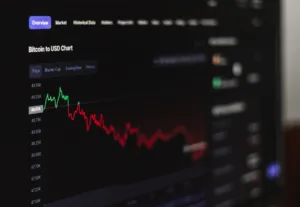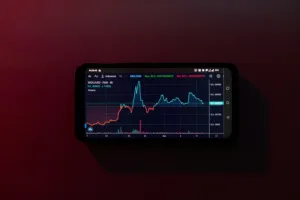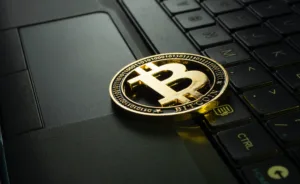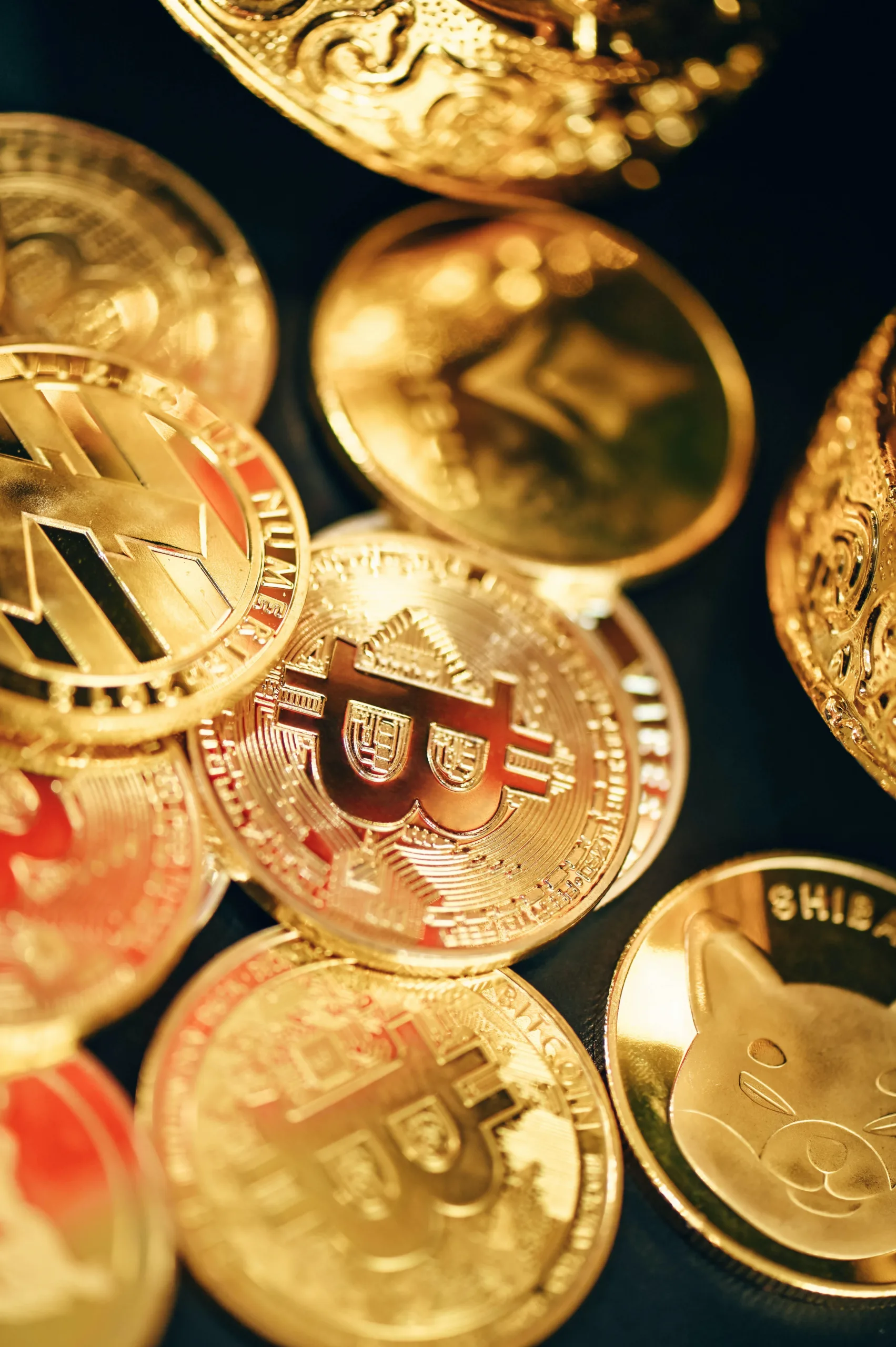In a world where art meets the cutting edge of technology, Crypto emerges as a compelling and revolutionary trend. At its core, crypto art collecting is the acquisition and ownership of unique digital assets, transforming the traditional art landscape into an innovative and decentralized realm.
Crypto Art Collecting: A Brief Overview
At its essence, crypto involves the acquisition of digital artworks secured through blockchain technology. Unlike traditional art, these pieces are represented as Non-Fungible Tokens (NFTs), offering unparalleled ownership and authenticity in the digital space.
Riding the Wave of a Rising Trend
As we navigate the 21st century, the trend of crypto is gaining unprecedented momentum. The fusion of artistic expression and blockchain technology has captivated audiences worldwide, leading to a surge in interest and participation. This blog post, “Crypto Art Collecting 101: Unleashing the Power of Digital Assets,” explores the ins and outs of this rising phenomenon.
The Significance of Crypto Art Collecting
More than just a trend, crypto signifies a seismic shift in the perception of art ownership and value. It transcends the physical constraints of traditional mediums, opening up a new frontier where digital assets hold immense power and potential.
Unveiling the Potential Power and Value
As we dive into the world of crypto, it’s crucial to recognize the potential power and value these digital assets bring to collectors and investors. The decentralized nature of blockchain ensures transparency, uniqueness, and traceability, making each piece a valuable addition to a collector’s portfolio.
Whether you’re a seasoned art enthusiast or a business decision-maker looking to explore the fusion of technology and creativity, understanding the dynamics of crypto is a crucial step toward unlocking the vast potential of digital assets.
Understanding Crypto Art
Defining Crypto Art: A Digital Revolution

Crypto art represents a transformative departure from traditional art forms, encapsulating a new era of artistic expression in the digital realm. In essence, crypto art refers to digital artworks secured and verified through blockchain technology, creating a unique form of ownership and authenticity.
The Role of Blockchain Technology in Crypto Art
At the heart of crypto art lies the revolutionary technology known as the blockchain. Blockchain serves as the backbone, ensuring transparency, security, and provenance for each digital masterpiece. This decentralized ledger not only authenticates the origin of the artwork but also guarantees its uniqueness, setting crypto art apart from traditional counterparts.
A Glimpse into History: The Evolution of Crypto Art
To truly grasp the significance of crypto art, it’s essential to delve into its brief yet impactful history. Emerging in the early 2010s, crypto art gained traction as blockchain technology advanced. Pioneered by innovative artists exploring the limitless possibilities of the digital canvas, the movement quickly evolved into a global phenomenon.
From Experimentation to Mainstream Recognition
The evolution of crypto art mirrors a journey of experimentation, resilience, and eventual mainstream recognition. Early adopters paved the way for today’s vibrant community of artists, collectors, and enthusiasts. Understanding this evolution provides valuable insights into the roots of crypto art and the dynamic landscape it has become.
As we embark on this exploration of crypto art collecting in “Crypto Art Collecting 101: Unleashing the Power of Digital Assets,” we lay the foundation by understanding the roots, defining characteristics, and the transformative role of blockchain technology in shaping this innovative art form.
The Significance of NFTs
Demystifying NFTs: Understanding Non-Fungible Tokens
At the core of crypto art collecting lies the revolutionary concept of Non-Fungible Tokens (NFTs). NFTs are unique cryptographic tokens that represent ownership of a specific digital asset, making each piece of crypto art distinct and irreplaceable.
The Functional Role of NFTs in Crypto Art
In the realm of crypto art, NFTs play a pivotal role in establishing ownership and authenticity. When an artist creates a digital masterpiece, they tokenize it by converting it into an NFT. This process, often referred to as “minting,” transforms the artwork into a unique, verifiable asset on the blockchain.
Navigating Ownership and Provenance in the Digital Realm
Ownership in the digital realm is redefined through NFTs. Unlike traditional art, where provenance is established through physical documentation, NFTs create an indelible and transparent trail on the blockchain. This not only verifies the current owner but also ensures a clear lineage of ownership, enhancing the artwork’s value.
Beyond Possession: The Significance of Provenance
In the world of crypto art, provenance is not merely a historical record; it’s a dynamic testament to the journey of the digital asset. Provenance on the blockchain offers a real-time, unforgeable chronicle of ownership changes, creating a secure and unambiguous trail of the artwork’s history.
As we unravel the significance of NFTs in “Crypto Art Collecting 101: Unleashing the Power of Digital Assets,” it becomes clear that these tokens are the linchpin, providing security, uniqueness, and an innovative approach to ownership in the ever-expanding universe of crypto art.
Creating Crypto Art
Unveiling the Creative Process: Crafting Crypto Masterpieces
The process of creating crypto art is a dynamic and innovative journey that merges artistic prowess with technological finesse. Artists venture into the digital canvas, using a variety of tools to craft pieces that transcend traditional boundaries.
Tools of the Trade: Tokenizing the Imagination
To tokenize their work and bring it into the crypto art realm, artists employ a spectrum of cutting-edge tools and platforms. Software suites tailored for digital art creation, such as Adobe Creative Cloud and Procreate, enable artists to infuse their creativity into a digital format. These platforms serve as the incubators where artistic vision metamorphoses into the digital masterpieces that captivate the crypto art world.
Navigating the Digital Landscape: Platforms for Tokenization
As artists venture into the digital frontier, they leverage specialized platforms for tokenizing their creations. Ethereum-based platforms like Rarible, OpenSea, and Mintable empower artists to transform their digital art into tradable assets. This tokenization process not only authenticates the originality of the artwork but also facilitates its journey through the decentralized art market.
Celebrating Visionaries: Notable Crypto Artists

In the vast cosmos of crypto art, visionaries have emerged, pushing the boundaries of creativity and technology. Notable crypto artists like Beeple, CryptoPunk creators, and 3D artist Krista Kim have left an indelible mark on the digital art landscape. Their contributions not only showcase the immense potential of crypto art but also inspire a new generation of digital artists.
As we explore the fascinating realm of creating crypto art in “Crypto Art Collecting 101: Unleashing the Power of Digital Assets,” we invite you to witness the convergence of artistry and technology that defines this transformative artistic movement.
The Crypto Art Market
Navigating Trends: An Overview of Crypto Art Market Dynamics
The crypto art market is a dynamic ecosystem shaped by ever-evolving trends, making it a captivating space for collectors, enthusiasts, and investors alike. Understanding the pulse of the market provides valuable insights into the transformative nature of crypto art.
Rising Tides: Trends Shaping the Crypto Art Landscape
Market trends within the crypto art sphere are experiencing an upward surge, reflecting a growing global interest in digital assets. Collectors are increasingly drawn to the unique value proposition that crypto art offers, transcending traditional boundaries and creating an immersive and participatory art experience.
Trading in the Digital Arena: Buying, Selling, and Trading with Cryptocurrencies
The process of acquiring and exchanging crypto art mirrors the decentralized ethos of the blockchain. Using cryptocurrencies such as Ethereum, buyers and sellers engage in seamless transactions on dedicated platforms. Smart contracts facilitate these transactions, ensuring a secure and transparent exchange of digital assets without the need for intermediaries.
Decoding Financial Potential: Gains and Dynamics in Crypto Art
Beyond the intrinsic value of owning digital masterpieces, the crypto art market presents unique financial opportunities. With high-profile sales and a growing collector base, the potential for financial gains in the crypto art arena is becoming increasingly evident. Understanding the market dynamics, including factors influencing prices and demand, provides a strategic advantage for those looking to participate in this burgeoning market.
As we immerse ourselves in the realm of the crypto art market in “Crypto Art Collecting 101: Unleashing the Power of Digital Assets,” we invite you to explore the exciting interplay of trends, transactions, and financial dynamics that define this groundbreaking space.
Crypto Art Collecting as an Investment
Unlocking Potential: Investing in Crypto Art
Delving into the world of crypto art goes beyond mere appreciation; it opens doors to a realm of investment potential. Crypto art collecting has emerged as a strategic and lucrative avenue for both seasoned collectors and savvy investors, redefining traditional perceptions of art as an asset class.
The Value Proposition: Why Crypto Art Collecting Matters
For collectors and investors alike, the allure of crypto art lies not only in its aesthetic appeal but also in its potential for value appreciation. The decentralized and transparent nature of blockchain technology ensures the authenticity and scarcity of digital assets, creating a unique value proposition. Owning a piece of crypto art transcends traditional art ownership, as it represents a stake in a global, digital movement with vast growth potential.
Success Stories and Milestones: High-Profile Sales in the Crypto Art World
The crypto art landscape has witnessed remarkable success stories, with high-profile sales making headlines globally. Notable instances, such as Beeple’s record-breaking sale at auction, underscore the financial potential within this burgeoning market. These success stories serve as testaments to the increasing recognition and acceptance of crypto art as a valuable investment.
Strategies for Success: Navigating the Crypto Art Investment Landscape
As we explore the investment potential of crypto art in “Crypto Art Collecting 101: Unleashing the Power of Digital Assets,” we unravel strategies for success in this dynamic space. Whether you’re a collector with an eye for rare digital treasures or an investor seeking to diversify your portfolio, understanding the nuances of crypto art as an investment can pave the way for a rewarding journey.
Challenges and Criticisms
Navigating Challenges: Addressing Concerns in Crypto Art Collecting

While the realm of crypto art collecting holds immense promise, it is not without its set of challenges and criticisms. As we delve deeper into this dynamic landscape in “Crypto Art Collecting 101: Unleashing the Power of Digital Assets,” it’s essential to address and navigate these concerns for a holistic understanding.
Addressing Challenges in Crypto Art Collecting
One primary challenge is the volatility inherent in the crypto market. The value of digital assets can fluctuate significantly, posing potential risks for collectors and investors. Additionally, issues related to copyright infringement and intellectual property rights can arise, raising questions about the long-term sustainability of certain pieces within the crypto art ecosystem.
Environmental Considerations: Blockchain Technology’s Footprint
A notable criticism associated with crypto art and blockchain technology is its environmental impact. The energy-intensive process of mining and validating transactions on the blockchain, often referred to as “proof-of-work,” has raised concerns about carbon footprints. As environmental sustainability becomes an increasingly vital consideration, the crypto art community is exploring alternative, eco-friendly blockchain solutions.
Balancing Progress and Responsibility
Acknowledging these challenges and criticisms is crucial for the continued growth and acceptance of crypto art collecting. Striking a balance between technological innovation and environmental responsibility is a shared responsibility within the community. As we explore the challenges in the crypto art landscape, it’s an opportunity for collective introspection and proactive solutions to shape a sustainable future for digital art.
Future Trends
Crystal Ball Gazing: Predictions on Future Trends in Crypto Art Collecting
Peering into the future of crypto art collecting unveils a canvas rich with innovation and transformation. As we explore what lies ahead in “Crypto Art Collecting 101: Unleashing the Power of Digital Assets,” we unravel predictions that paint a compelling picture of the industry’s evolution.
Tokenization Beyond Art: Expanding Horizons
One key trend on the horizon is the expansion of tokenization beyond traditional art forms. We anticipate the tokenization of various digital assets, including virtual real estate, music, and even virtual experiences. This evolution has the potential to create new avenues for collectors and redefine the boundaries of the crypto art landscape.
Integration of Augmented Reality (AR) and Virtual Reality (VR)
The integration of augmented and virtual reality into crypto art platforms is poised to redefine the viewer’s experience. Collectors may soon immerse themselves in a virtual gallery, experiencing digital art in unprecedented ways. This shift towards immersive technologies has the potential to revolutionize how art is perceived and collected in the digital realm.
Decentralized Autonomous Organizations (DAOs): Community-Driven Curation
The rise of Decentralized Autonomous Organizations (DAOs) is a trend gaining momentum. These community-driven entities enable collective decision-making, allowing members to participate in curation, exhibitions, and even artist collaborations. This shift towards community involvement could democratize the art world and empower collectors to actively shape the direction of the crypto art landscape.
The Evolution of Sustainable Blockchain Solutions
Acknowledging environmental concerns, a future trend may involve a significant shift towards sustainable blockchain solutions. From the adoption of proof-of-stake mechanisms to exploring eco-friendly alternatives, the industry is likely to prioritize environmentally conscious practices to ensure the long-term viability of crypto art collecting. As we embark on this journey into the future these predictions serve as signposts, guiding us toward an era where innovation, inclusivity, and sustainability converge to shape the next chapter in digital art evolution.
Conclusion
In conclusion, “Crypto Art Collecting 101: Unleashing the Power of Digital Assets” has been a journey through the vibrant and transformative world of crypto art. As we recap the key points discussed in this exploration, it becomes evident that is not just a trend but a paradigm shift in the way we perceive, own, and interact with art.
Recapitulating the Journey: Key Takeaways
We began by defining crypto art, unraveling its distinction from traditional forms, and understanding the pivotal role of blockchain technology in creating unique digital assets. The evolution from its early days to the present showcased the rapid growth and global embrace of this digital artistic movement.
Navigating the significance of Non-Fungible Tokens (NFTs), we explored how these cryptographic tokens redefine ownership and provenance in the digital realm. The process of creating crypto art, from tools and platforms to notable artists’ contributions, highlighted the dynamic and innovative nature of this burgeoning art form. Venturing into the crypto art market, we observed the trends shaping its landscape, the seamless transactions using cryptocurrencies, and the potential financial gains for collectors and investors. Acknowledging the challenges and criticisms, including environmental concerns, underscored the importance of responsible growth within the crypto art community.
Looking Ahead: A Call to Explore
As we stand on the cusp of the future in crypto art collecting, we invite you to be part of this transformative journey. The predictions of future trends, from expanded tokenization to immersive technologies and community-driven curation, point towards a future where the possibilities are as vast and boundless as the digital canvas itself.
In closing, this exploration is an invitation to explore the world of space where technology and creativity converge, where ownership is redefined, and where the art is not confined to galleries but extends into the decentralized reaches of the digital realm. Whether you’re an art enthusiast, a collector, or a decision-maker contemplating the integration of crypto art into your business, the journey has just begun.
Embark on this adventure, explore the digital galleries, support emerging artists, and become part of a community that is shaping the future of art. The power of digital assets is at your fingertips, waiting to be unleashed in the exciting and ever-evolving world of crypto art collecting.
{
“@context”: “https://schema.org”,
“@type”: “FAQPage”,
“mainEntity”: [
{
“@type”: “Question”,
“name”: “What is Crypto Art?”,
“acceptedAnswer”: {
“@type”: “Answer”,
“text”: “Crypto Art refers to digital artworks that are tokenized as non-fungible tokens (NFTs) on a blockchain, providing a secure and verifiable way to buy, sell, and own digital art.”
}
},
{
“@type”: “Question”,
“name”: “How does Crypto Art differ from traditional art?”,
“acceptedAnswer”: {
“@type”: “Answer”,
“text”: “Crypto Art is digital and exists in a blockchain as an NFT, while traditional art is physical. Ownership and authenticity in Crypto Art are secured by blockchain technology, offering a distinct difference from traditional art.”
}
},
{
“@type”: “Question”,
“name”: “Why are digital assets powerful in the art world?”,
“acceptedAnswer”: {
“@type”: “Answer”,
“text”: “Digital assets in the form of NFTs bring powerful attributes like rarity, scarcity, and decentralization to the art world. Blockchain ensures authenticity, and the technology empowers both artists and collectors by removing intermediaries.”
}
},
{
“@type”: “Question”,
“name”: “How do I start collecting Crypto Art?”,
“acceptedAnswer”: {
“@type”: “Answer”,
“text”: “To start collecting Crypto Art, you need to set up a crypto wallet, explore NFT marketplaces, and research artists. Budgeting and understanding the valuation of artworks are crucial steps in building your crypto art collection.”
}
},
{
“@type”: “Question”,
“name”: “What are the risks and challenges in Crypto Art collecting?”,
“acceptedAnswer”: {
“@type”: “Answer”,
“text”: “Risks include the volatility of the crypto market and legal considerations such as copyright issues. It’s important to manage investment risks and be aware of the ethical implications of the Crypto Art market.”
}
},
{
“@type”: “Question”,
“name”: “What trends can be expected in the future of Crypto Art?”,
“acceptedAnswer”: {
“@type”: “Answer”,
“text”: “The future of Crypto Art may involve the integration of VR and AR, increased interactivity in digital artworks, and growing mainstream acceptance with museums and galleries embracing this form of art.”
}
}
]
}



